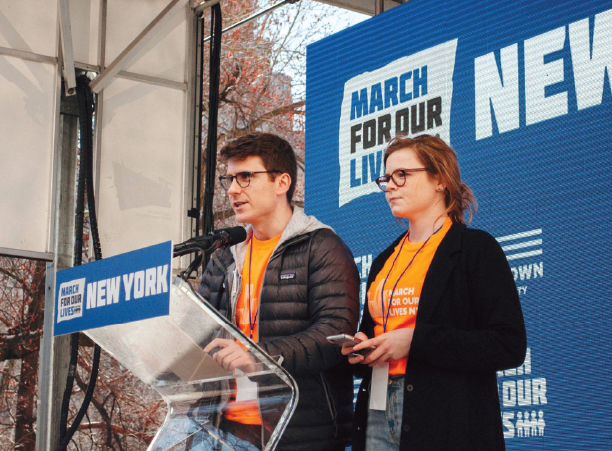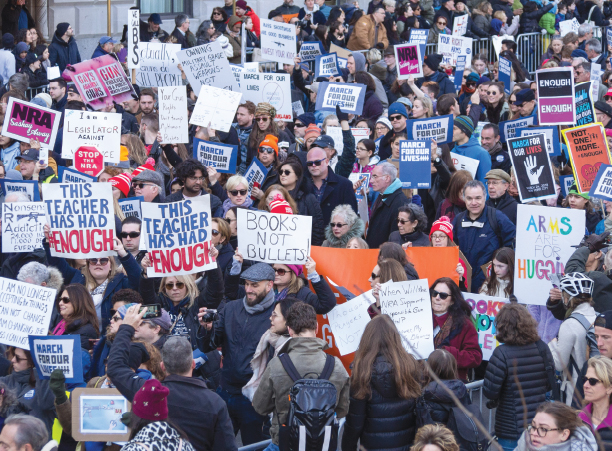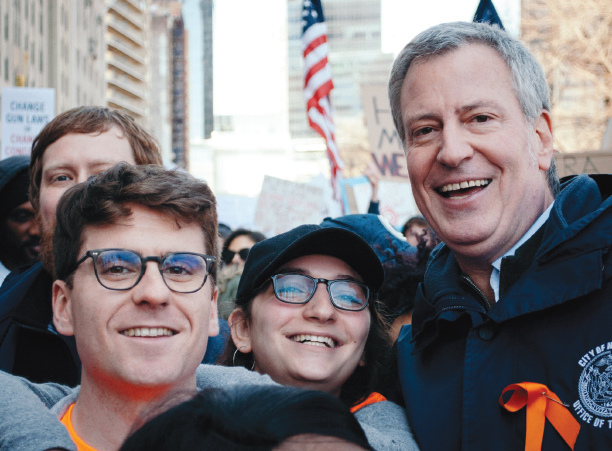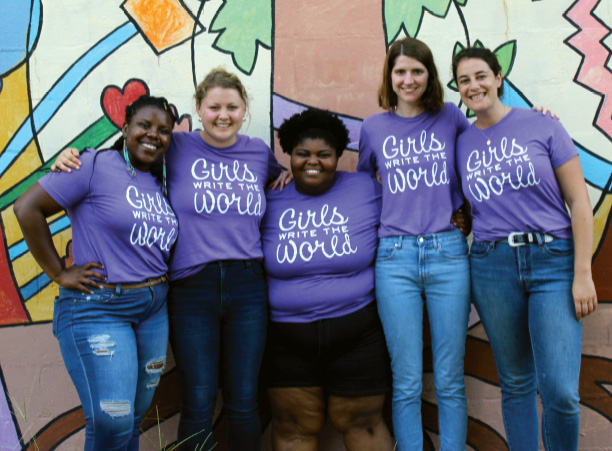 On Feb. 14, 2018, I received a news alert on my phone that there was a mass shooting at a high school in Parkland, Florida. As the day progressed and I learned more about the horrific event, I texted friends asking if they had heard. The response was muted, but generally consistent: This was a normal occurrence in America. I thought about my former students, whom I had taught through a Fulbright fellowship overseas just after graduating; I thought about their excitement to learn, their vulnerability and innocence, and my role as their mentor, guide and protector. How had a place of learning become a battlefield?
On Feb. 14, 2018, I received a news alert on my phone that there was a mass shooting at a high school in Parkland, Florida. As the day progressed and I learned more about the horrific event, I texted friends asking if they had heard. The response was muted, but generally consistent: This was a normal occurrence in America. I thought about my former students, whom I had taught through a Fulbright fellowship overseas just after graduating; I thought about their excitement to learn, their vulnerability and innocence, and my role as their mentor, guide and protector. How had a place of learning become a battlefield?
When the students of Parkland issued a call to action for a nationwide march calling for new gun legislation — March For Our Lives — I felt a strong need to support them. I jumped at the opportunity to participate, hoping that action might ease my despair and transform it into something real and impactful.
I began by looking for organizing groups on social media, but I couldn't find anything. Surprised, I decided to create a Facebook group, which I envisioned would coordinate the efforts of about 30 or so friends and classmates to attend a march. Without any expectation, it swelled into the planning apparatus for the city's major event. Within 24 hours we had more than 15,000 people expressing an interest in attending. Through pure happenstance, our group was quickly regarded as the official organizing body for the New York City march.
I convened meetings with local gun violence prevention community groups and established a fundraising effort. The support was incredible and immediate; we raised $25,000 in 10 days. Having never done so before, I somewhat haphazardly applied for a city parade permit — at first for a turnout of 3,000 to 5,000 people. By the end of the first week, due to the swelling numbers of people expressing interest, I had to change the estimated attendance to 30,000. On the day of the march, the mayor's office ultimately estimated that nearly 200,000 people marched with us.
The early days of organizing were chaotic and intimidating. Our small core of student organizers, who were from high schools, colleges and graduate schools across New York, had limited organizing experience. Oftentimes, we Skyped late into the night, foregoing school assignments and our personal lives for what we saw as a more pressing commitment. Our energy matched the national atmosphere, drawing similarly outraged and emboldened groups quickly into our circle.
Over time, more established gun control groups got in touch with us, offering to connect us to others and, eventually, to help provide funding. Even with all the tremendous outpouring of support, the planning still required tremendous dedication by dozens of students and organizers, working tirelessly to make the event possible. Students controlled predominantly every aspect of the process: Across the board they organized, made important decisions and worked with political offices and grassroots organizations all over New York state.
It was incredible to be at the center of such an intensive group organizing effort, but it wasn't without difficulties. The scale, time pressure, competing interests and all-around public scrutiny tried my patience and persistence more than once. What lifted me out of those low moments was the hope that the culminating event would be impactful, meaningful and maybe even politically significant. It was bigger than me, than us.
I am most proud of one aspect of our organizing in particular, which I believe contributed to the success of the march and to its lasting currency in subsequent political efforts. We emphasized and centered around the participation and experiences of New Yorkers, especially people of color who are disproportionately impacted by the scourge of gun violence. On the day of our rally, we didn't just hear the stories of Parkland students and their parents, we also heard from grassroots organizers from gun violence prevention groups all over the city, student leaders from Black Lives Matter of Greater New York, and the founder of the Wear Orange movement, created as a reaction to gun violence on the streets of Chicago.
We didn't want to focus on gun violence as a myopic issue that only impacted schools; we knew that the stories of the destructive impact of gun violence in communities of color had to be told. In this way, we were able to bring together a broad coalition of allies. On the day of our march, New York Gov. Andrew Cuomo marched next to Hawk Newsome, president of Black Lives Matter of Greater New York, as organizers from local organizations such as Harlem Mothers S.A.V.E. marched with organizers from massive national organizations like Everytown for Gun Safety.
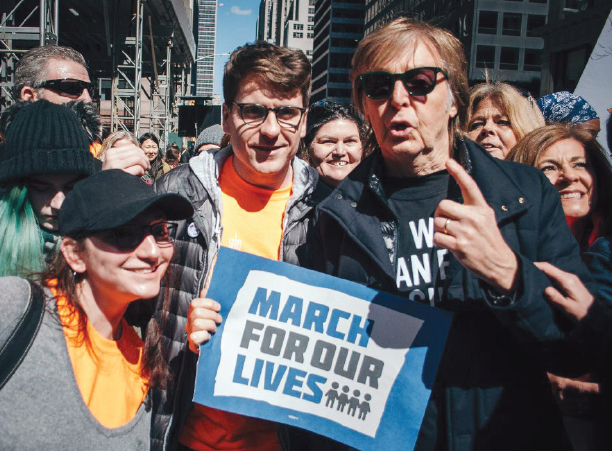 Clavering with participant Sir Paul McCartney. Courtesy of Alex Clavering
Clavering with participant Sir Paul McCartney. Courtesy of Alex ClaveringI'm humbled to have had the opportunity to work with the incredible students and organizations who made this event possible. If I've learned anything from this experience, it is that we shouldn't expect other people to take action to do things that are right. Being a person who serves others means taking action in spite of cynicism and inertia. And while it is obviously not always the case, sometimes, when you work very hard and try to do what you believe is genuinely right, amazing things can happen.
This was just the first step. Our organizers, students and newfound allies are energized like never before. The next step is taking this momentum and turning it into real, concrete change. This is a movement, not a moment.
Written by Alex Clavering '13 for the Summer 2018 issue of Holy Cross Magazine.
About Holy Cross Magazine
Holy Cross Magazine (HCM) is the quarterly alumni publication of the College of the Holy Cross. The award-winning publication is mailed to alumni and friends of the College and includes intriguing profiles, make-you-think features, alumni news, exclusive photos and more. Visit magazine.holycross.edu/about to contact HCM, submit alumni class notes, milestones, or letters to the editor.
